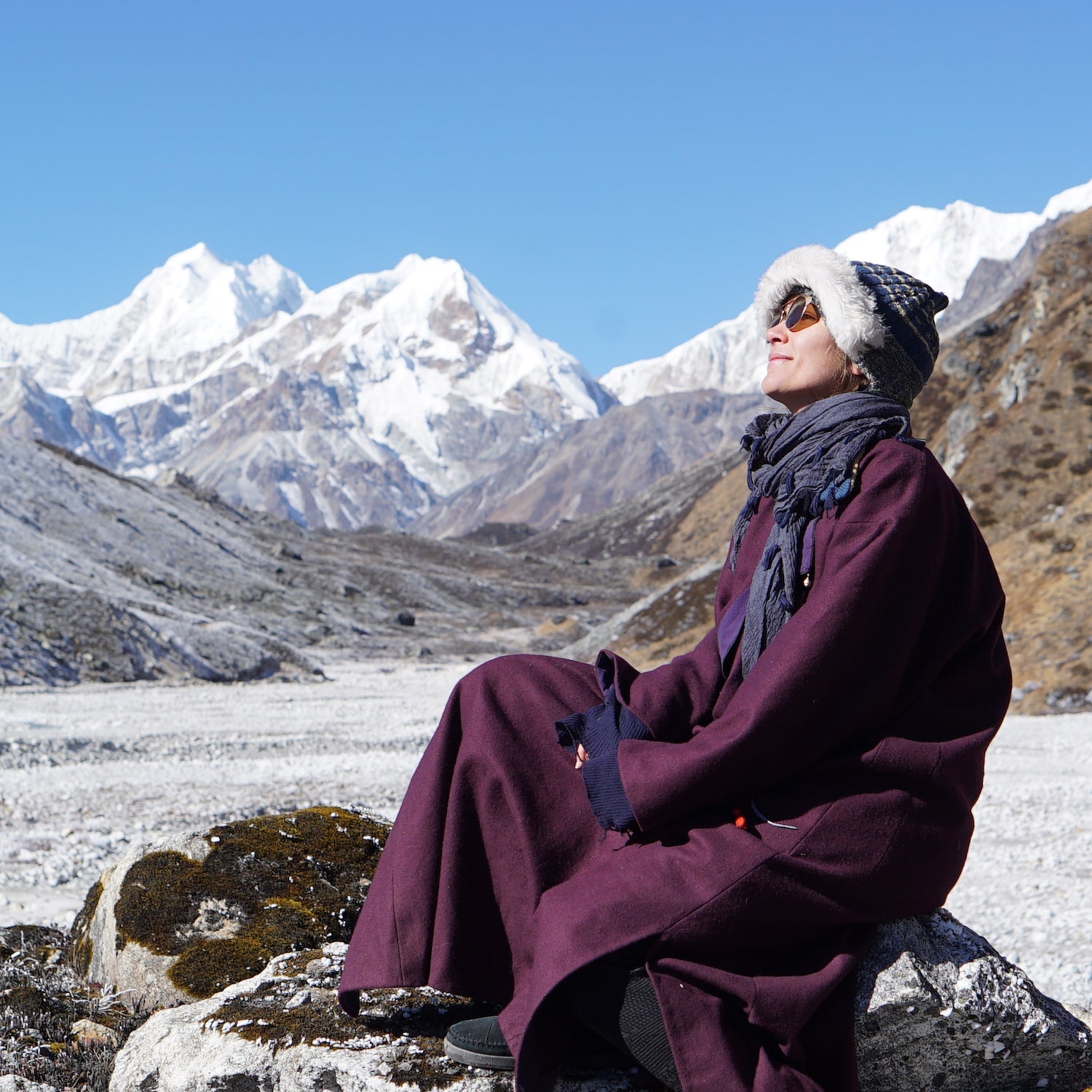Since November 2017, Elise Wortley has been following in the footsteps of some of history’s great women adventurers. And she’s been doing so using the equipment that would have been available to the women in their eras—right down to the itchy woolen underwear.
The idea of recreating women’s adventures came to Wortley, a Brit who’s��now 30, while reading��My Journey to Lhasa at 16 years old. An adventure classic, the book was written by the French Buddhist scholar Alexandra David-Néel��and follows her time spent slipping past armed guards and over snowy mountain passes into Tibet. The Tibetan capital was forbidden to foreigners at the time, so she disguised herself as a local pilgrim and hoped she wouldn’t be discovered. She was 55 when she became the first Western woman to reach the region’s capital��in 1924.
While reading, Wortley found herself amazed by David-Néel’s confidence. If she could go on a boat and across the world not having a clue what lay ahead, then I must have that confidence somewhere, too,��she thought.
After graduating from art school in her early twenties, Wortley began working for a travel company in London. Then she got sick. “I was basically dizzy for about a year,” she says. Unable to take the bus, or even get on the subway, she couldn’t go in to the office. “No one knew what was wrong with me. I had all sorts of tests before a doctor realized it was anxiety.”
Stuck at home, Wortley began rereading My Journey to Lhasa and started plotting to set off like David-Néel.
After finding anxiety medication that worked for her, seeking out sponsors, and saving up money from her job in PR, Wortley began traveling. First, in 2017, she hiked 110 miles from Lachen, India, near the Tibetan border, west to Kanchenjunga, the third-highest mountain in the world. Then, in 2019, she spent three weeks traversing the granite slopes of the Scottish Highlands, inspired by Nan Shepherd, who wrote her ode to the Cairngorms,��The Living Mountain, in the midst of World War II. On both expeditions, Wortly��wore, as much as possible, the gear that was available to female explorers at the time. (Finding genuine 1920s sunglasses at a decent price proved impossible, though.)
But Wortley’s not done yet. Next��she plans to embark��on journeys inspired by the lives of explorer Freya Stark, climber Annie Smith Peck, and warrior nun Ani Pachen. “It would be my dream to get to celebrate and follow all of these women’s footsteps,” she says. “Going out in just the basics, I’ve realized how little I actually need to go outside.”
Here’s the gear Wortley took on her first expedition to the Himalayas, following David-Néel.��
Chairpack
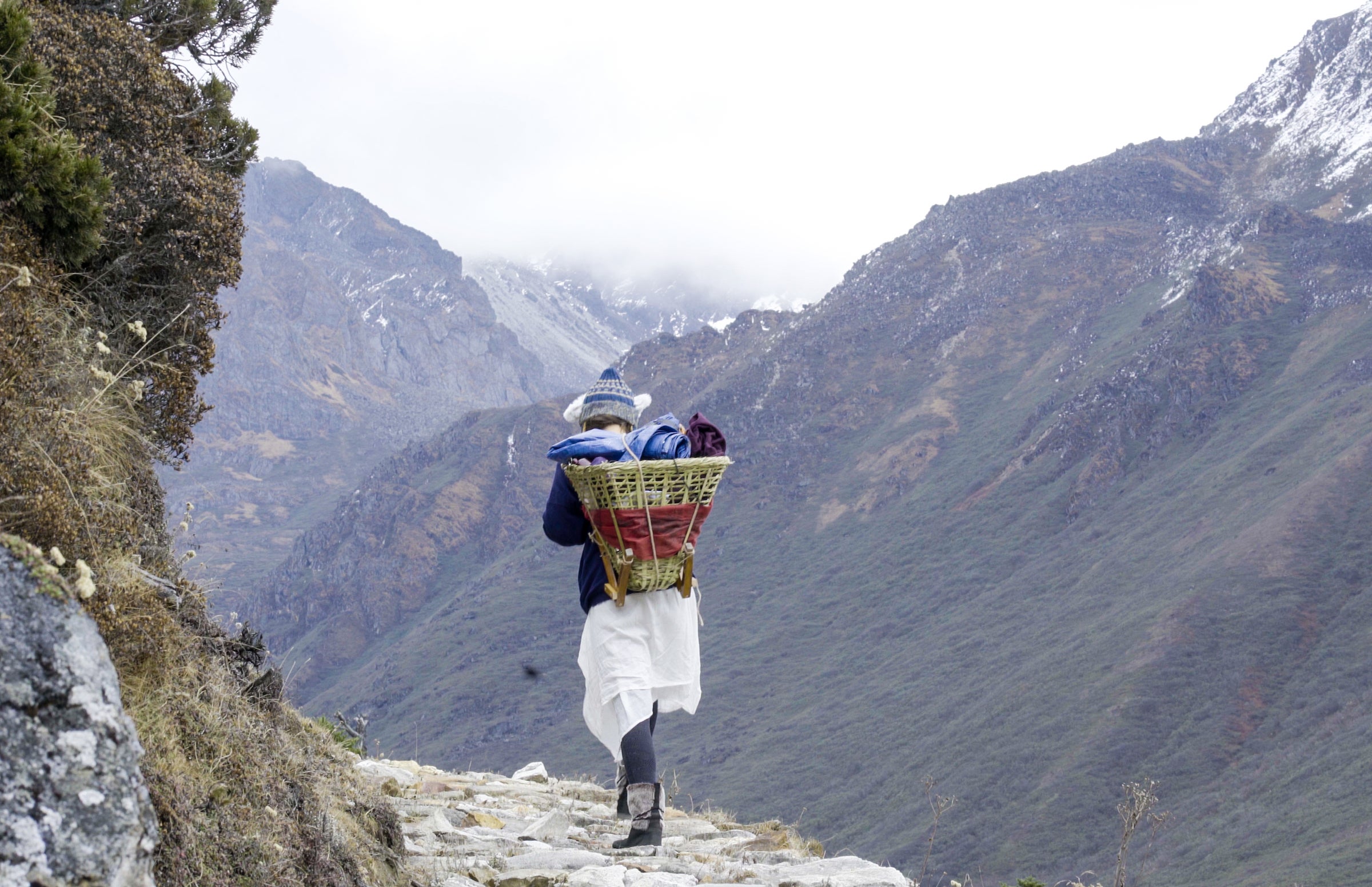
Going for between $327 and $393��on eBay, backpacks dating back to the early 1900s aren’t cheap. So Wortley decided to do some upcycling and make her own. She found an abandoned chair on the street in the London suburb of Brixton, chopped off the legs, fashioned a frame, and took the contraption in her luggage to India. Once she arrived in the northern city of Gangtok, she attached a wicker basket she bought at the market for the equivalent of $4. And the “chairpack”��was born, rope straps and all.
The pack was sturdy and held up surprisingly well, but the same couldn’t be said of Wortley’s shoulders. “They were pretty red raw,” she says, “but I started using my wool mittens under the ropes for a bit of protection, and that worked well.”
Yak-Wool Hat
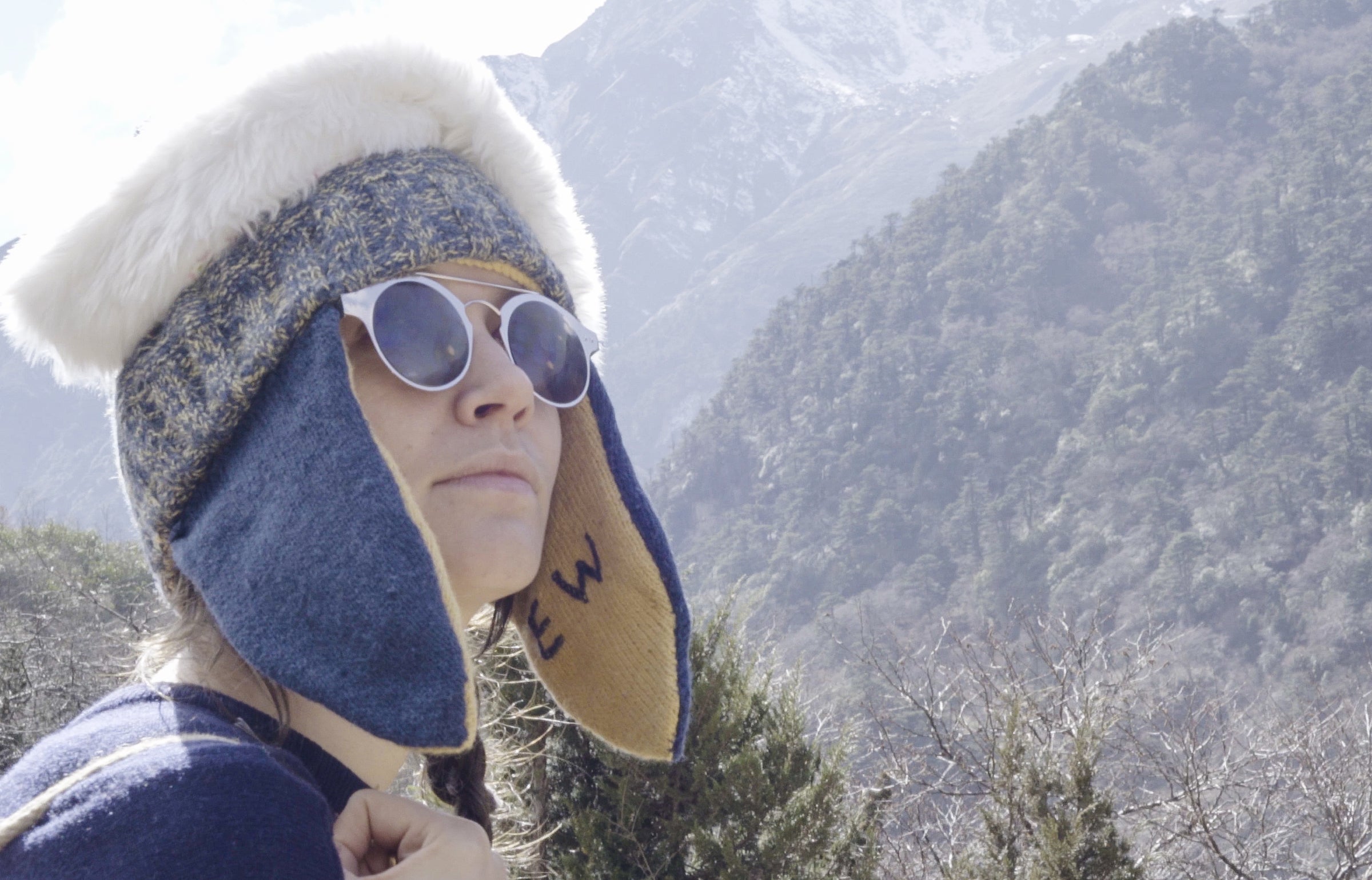
In My Journey to Lhasa, David-Néel describes wearing a “greasy fur” bonnet she’d found abandoned on the trail. Wortley didn’t go quite that far. This one was hand-knitted by her mother.
When the wool arrived in the mail from an Etsy seller, it was so thin that multiple pieces had to be woven��together to make a decent strand. It was worth the effort, says Wortley:��“This was the warmest hat I’ve ever had.”
Faux-Fur��Boots
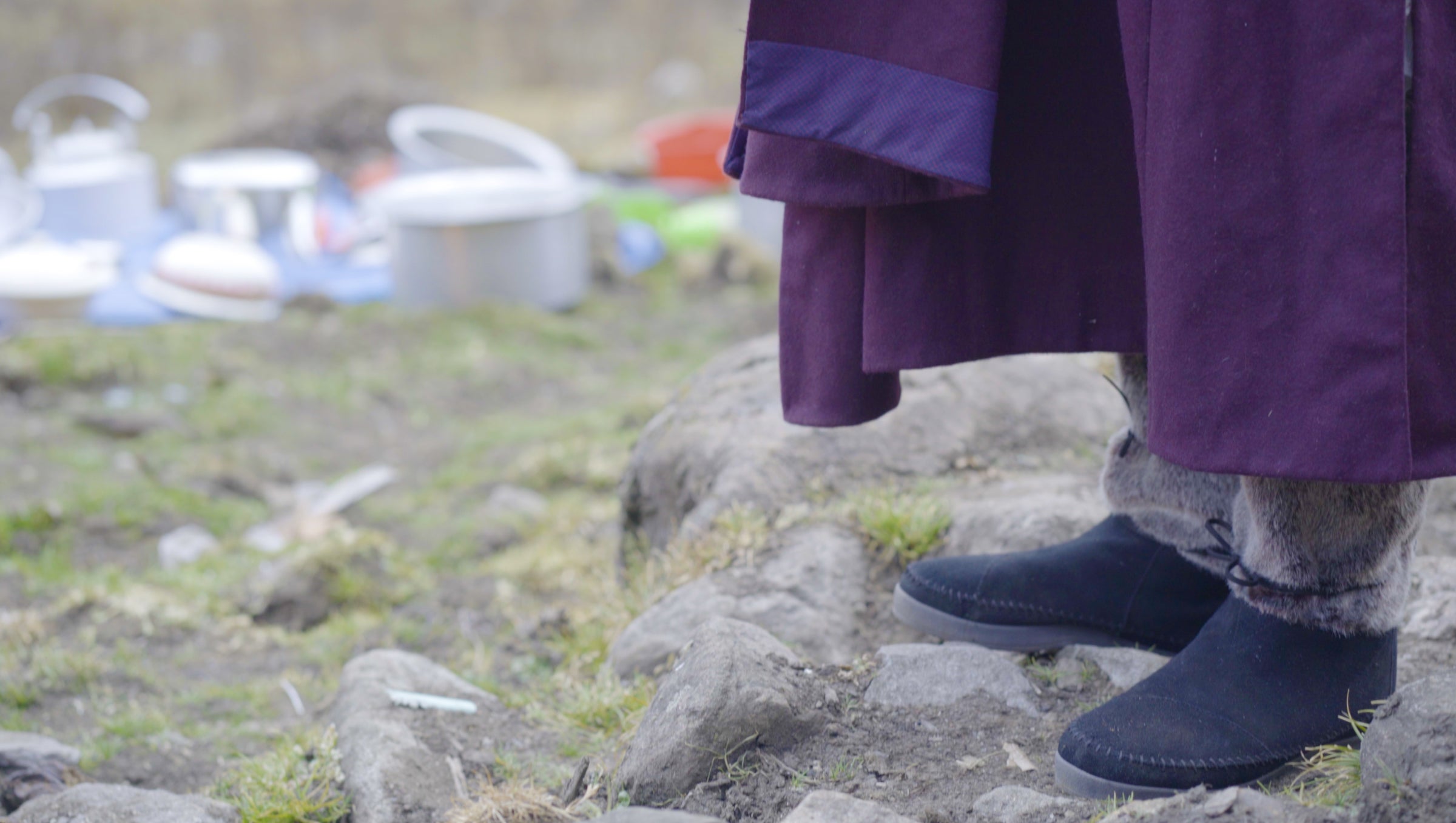
“I got fake ones because I didn’t really want fur,” says Wortley, who’s vegetarian and avoids animal products when she can. These cost around $20��from the market in Leh, India,��and were of a similar style to the boots David-Néel would have worn. They were “amazing,” she says. “I didn’t get a single blister.” The only issue with them was on the slippery, snowy parts of the trek. The rubber soles weren’t grippy, and at times she felt like she was trying to climb a mountain in a pair of Uggs. But this didn’t discourage��Wortley. After all, “Alexandra mentioned her slippy rubber-soled boots a lot in her writing, too.”
Yak-Wool Coat
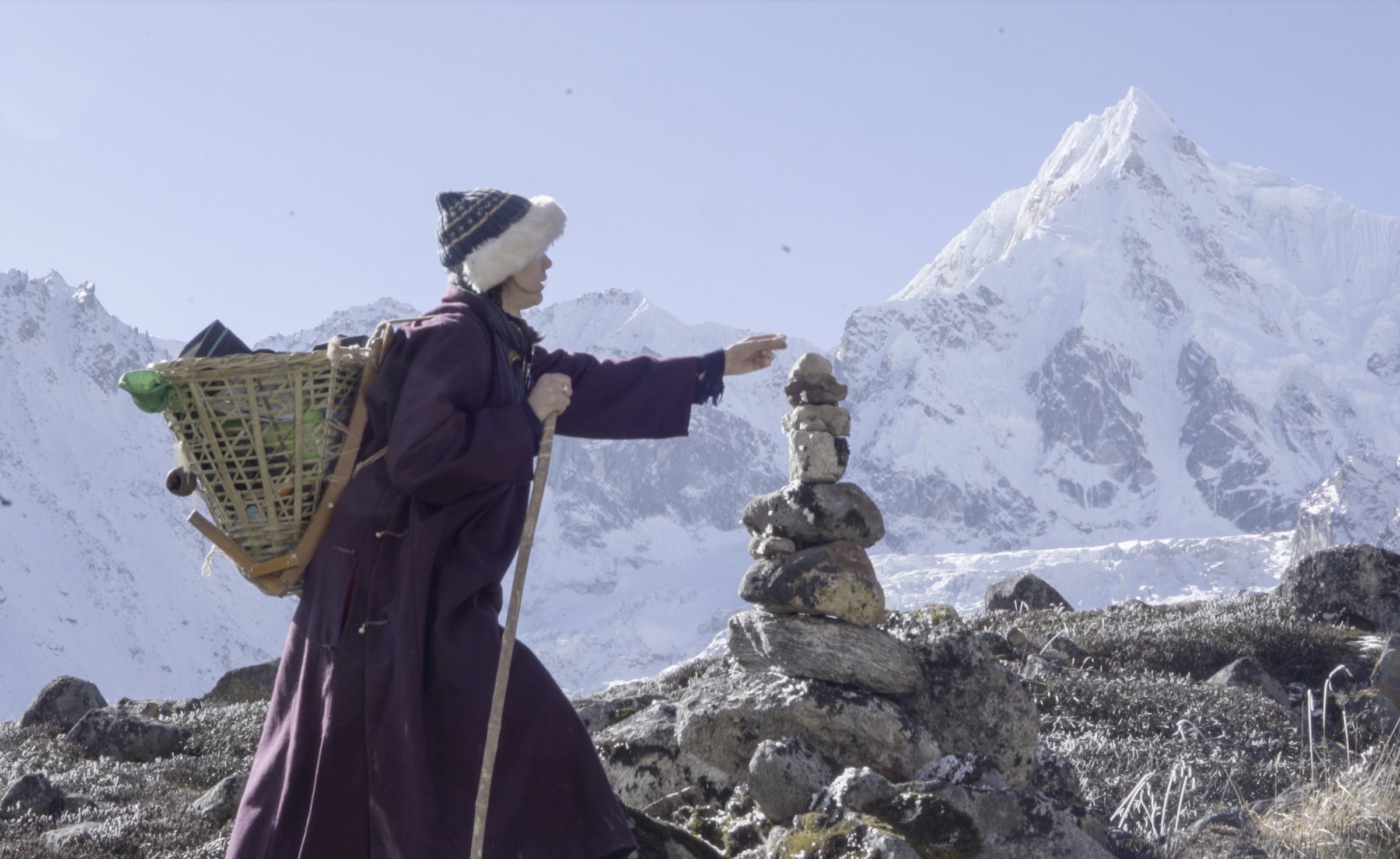
Wortley picked this up from the same market as the boots for about $26. With a woolen sweater and undergarment underneath, “it was actually really warm,” she says.��However, the pockets were tiny and therefore useless. “They were good for a tissue, and that’s about it!”
The coat was also a little too long for her body. “I really should have taken it to a tailor when I picked it up,” says Wortley, “but I was in a bit of a fluster and convinced I didn’t have the time. So whenever I went uphill, I would tread on its bottom and stumble or pull on its neck.”
Asked if she wears the coat on a regular basis at home in London, the answer was an emphatic no.��Since the Himalayas trip involved nightly gatherings around a hearth, she says, “it smells like bonfire.”
Wooden Stick
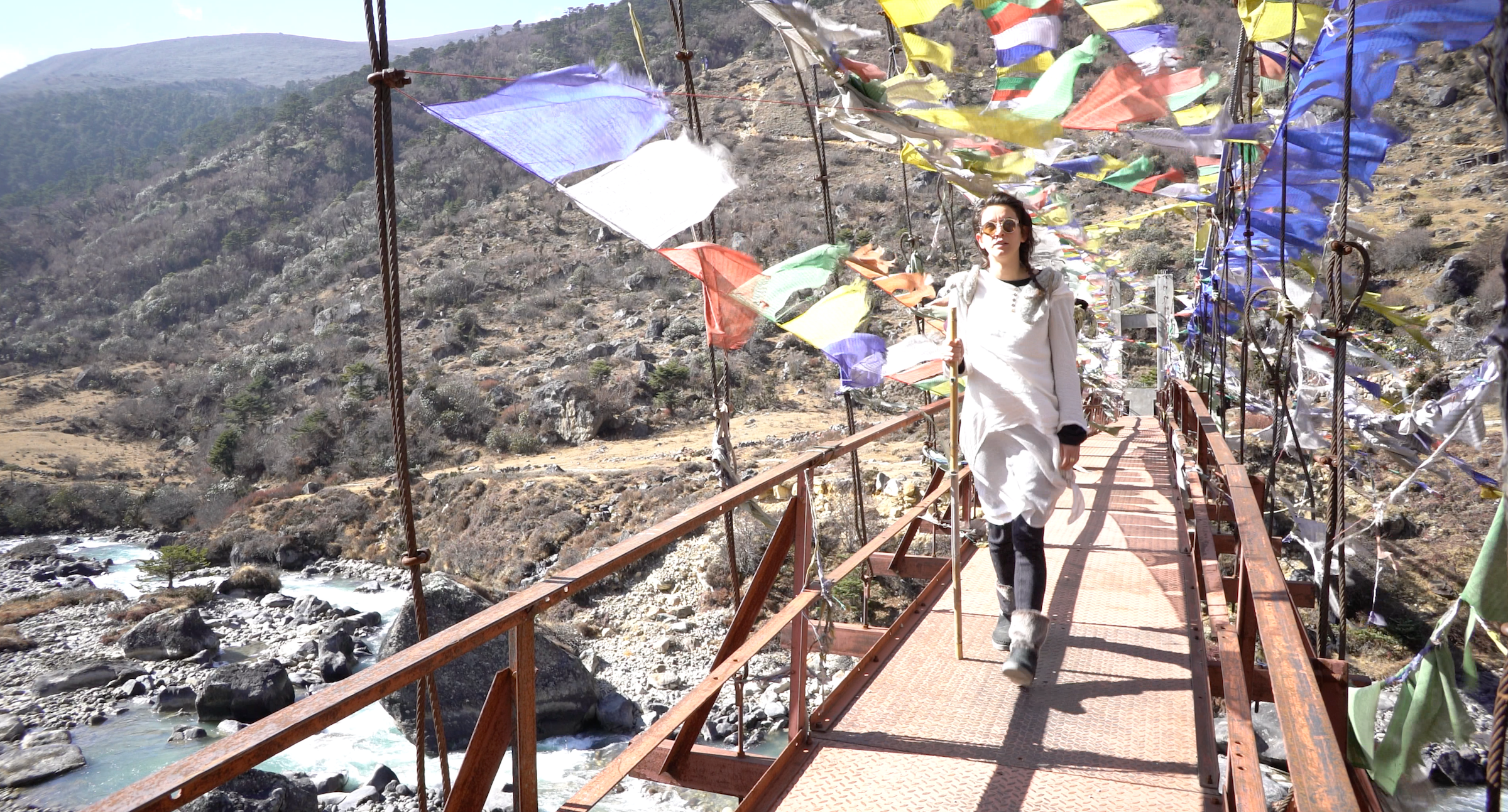
When there’s not much to do but sit around the fire and look up at the stars each evening, having something to keep your hands busy—like a wooden stick for making carvings—can be a game changer. A wooden pole is also a piece of gear that can legitimately be used as fuel. On the last night, “Sticky”��was burned in an “alcohol-, altitude-induced ritual,” says Wortley. You probably wouldn’t want to do that with your $180 name-brand trekking poles.


